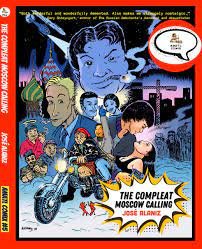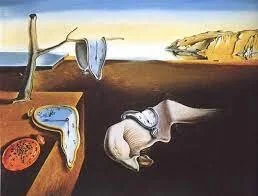
Academic
(and Academic-Adjacent)
Writing
“Tolstoy and Grenade Launchers”
I got to interview José Alaniz about his collection of outstanding comics about Moscow in the 1990s.
Get the book from Amatl Comicslcomix.sdsu.edu!
My contribution to a Russian History Blog conversation about Marko Dumancic’s excellent new book
Russian History Blog, June 4, 2021
Unstuck in Time explores the fictional and ideological reconfigurations of time in the aftermath of the Soviet collapse
All the Russias, June 1, 2021
A modest proposal for socializing at online conferences.
Feeding the Elephant: A Forum on Scholarly Communications. The H-Net Book Channel, November 4, 2020.
Adapted from Plots against Russia, the book.
Deutschmann, Peter, Jens Herlth, and Alois Woldan (eds.) “Truth” and Fiction: Conspiracy Theories in European Culture and Literature. Bielefeld: Transcript Verlag, 2020. 169-183.
How we work during the pandemic.
ASEEES Newsnet, June 2020.
As contemporary Russian discourse moves further and further not just to the right, but to a world in which even the most improbable conspiracy theories can be publicly entertained with a straight face, questions of intent and belief inevitably come to the fore. In Russia, as in America, liberal intellectuals bash their pointy but figurative heads against an equally figurative wall, half-asking, half-lamenting, “How can people really believe all this?” Or its corollary: “Do these people really believe what they’re saying?”
ASEEES Blog, January 17, 2020
From Julie Buckler,Julie Cassiday and Boris Wolfson (ed.s). Russian Performances:. Madison: University of Wissconsin Pres, 2018. 139-147.
So many late- and post-Soviet stories and books were preoccupied with the apocalypse. And so many of these apocalypse scenarios were preoccupied with books.
Evgeny Dobrenko and Mark Lipovetsky (eds.). Russian Literature since 1991. Cambridge: Cambridge University Press, 2015. 86-103
This is the text of my keynote for the “Undoing Eros: Love and Sexuality in Russian Culture” at Princeton in 2010. ASEEES Newsnet asked for it; I sent it to them as a rough draft, and they published it in that form without my consent. There are cheap shots I made for a small audience of friends that I never would have included for publication. Otherwise, though, I’m still kind of fond of it. (ASEEES Newsnet March 2011).
An abridged version of my earlier MMM article “Public Offerings’” (see below). Adele Barker and Bruce Grant (eds). The Russia Reader: History, Culture, Politics. Durham: Duke University Press, 2010. 706-713.
Cringing and learning with Borat.
Slavic Review 67.1 (2008): 7-10.
The boevik? So gay. Kultura 2 (2008): 17-21
Like I’m an expert on Chekhov, right? But this was a short entry on his story “A Nervous Breakdown” for the Encyclopedia of Erotic Literature. . For those few of you out there who didn’t run out an buy this hundred-dollar tome, here it is. (Brulotte, Gaetan and John Phillips (eds). Encyclopedia of Erotic Literature. New York: Routledge, 2006. Volume 1: 228-229.)
Now the theme reveals itself: the Encyclopedia of Erotic Literature wanted my contributions because I’d written about prostitutes (“sex workers” seems anachronistic in this context, though I support the nomenclature). This is my entry on Kuprin’s novel The Pit, which takes place in a brothel. I picked this cover because, while it is obviously a grim image of a woman hanging herself (based on a moment in the novel), it also strangely reminds me of Mary Poppins.
Two more unexciting pages from the Encyclopedia of Erotic Literature. Why do I even bother posting this stuff? Chalk it up to subclinical OCD.
From Helena Goscilo and Andrea Lanoux (eds.) Gender and National Identity in Russian Culture Northern Illinois University Press, 2006. 267-299.. A revised version of which served as the basis for Chapter 3 of Overkill.
A German translation of “Selling Russia.,” Oesteuropa (6/2006): 99-122.
This article served as the basis for Chapter 2 of Overkill. Lisa Z. Siegel (ed.) International Exposure: Perspectives on Modern European Pornography, 1800-2000. New Brunswick: Rutgers University Press, 2005. 232-254.
I first got into the meme business in the dawn of the twenty-first century, which means that I had to spend a lot of time answering the question “Is this a meme?” “Is that a meme?” (The answer was almost always “yes.”). Internet memes were still rather obscure, and play no role in this article. So this is from a brief moment when I was vaguely near the cutting edge (or at least could see the cutting edge from my house). Slavic and East European Journal 48.3 (2004): 462-484.
Yes, it’s an almost-20-year-old encyclopedia article about Viktor Pelevin. I can’t think of a single reason why you should read this.
Millar, James R. Encyclopedia of Russian History (2003)
Another encyclopedia-style entry, but not (I think) rendered irrelevant by the passage of time.. It actually contains literary analysis! Don’t look so shocked.
Marina Balina and Mark Lipovetsky (eds.) Dictionary of Literary Biography: Russian Writers Since 1980. 2003. 184-188.
The early Oughts gave us a surprising set of successful novels about clueless expats fumbling through the former Eastern Bloc, as well as stories of hapless émigrés navigating life in the United States: Jonathan Franzen’s The Corrections, Jonathan Safran Foer’s Everything Is Illuminated, Paul Greenberg’s Leaving Katya, Arthur Philipps’s Prague, Gary Shtenygart’s The Russian Debutante’s Handbook, and John Beckman’s The Winter Zoo. This essay was an early attempt at getting the lay of the land.
Spoiler alert: my favorite was Prague. I hated Everything Is Illuminated .
The Nation (January 2003).
My 2001 predictions about the field in 2020. So, yeah, I got it wrong.
AATSEEL Newsletter 44.1 (2020).
Once upon a time, I studied Modernism. This article is about Mayakovsky’s typically aggressive, masochistic, self-centered response to World War I.
The Silver Age: Russian Literature and Culture, 1881-1921 3-4 (2001). 85-104.
“Женоубийцы: жертвоприношение женщины и мужское товарищество в ранней советской эпохе”
(“The Ladykillers: Female Sacrifice and Male Comradeship in Early Soviet Fiction.”). Russian translation of an earlier version of Chapter 1 of Men Without Women.
Kontinent 108 (2001): 290-321.
This article makes the argument that was originally supposed to be central to my dissertation. I always hoped it would change the way people thought about Envy. Oh, well.
Russian Literature (2000).
An earlier version of Chapter 1 of Overkill. Russian Culture of the 1990s. Studies in Twentieth Century Literature. 24:1 (Winter 2000): 51-83.
Another version of the article that was the basis for Chapter 2 of Overkill. M. Levitt and A. Toporkov. (ed.) Eros and Pornography in Russian Culture. Moscow: Ladomir, 1999. 605-621.
Russian translation of early version of Chapter 2 of Overkill. Сергей Ушакин (ed.). О муже(н)ственности.
On the use of soap opera in a pyramid scheme’s advertising campaign. Adele Barker (ed.). Consuming Russia. Duke University Press, 1999. 49-75.
In my sole attempt at empirical fieldwork, I actually attended a “Mother of God Center” prayer service in the 1990s. It felt like a cross between Russian Orthodox liturgy, Pentecostalism, and Mel Brooks. None of that actually made it into the article.
Adele Barker (ed.). Consuming Russia. Duke University Press, 1999. 437-462.
My first article (sort of)! And, weirdly, the one that’s been republished the most. Fun with math, even more fun with pronouns, not to mention the secrets of the verb победить (to win). My only regret is spelling “Zamjatin” with a “j..”
Slavic and East European Journal 40.4 (1996): 667-683.
Russian translation of “The Plural Self.”
Русская литература XX века: направления и течения. Выпуск 3. 1996 40ь55.
“Slavophilia: The Incitement to Russian Sexual Discourse”
A first attempt at Chapter 1 of Overkill, disguised as a review article.
Slavic and East European Journal 40.1 (1996): 142-147.
What can I say? She’s my all time favorite cult-leader.
Religion 25.3 (1995): 249-266.
My first attempt at explaining the White Brotherhood. Most of it can be found, in a better form, in “Articles of Faith.”
Mind & Human Interaction 5.3 (1994): 110-122.




































